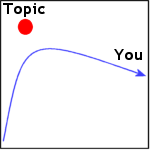(Here we go again ...)the differences always seem to be heard in sound stage, micro dynamics, air around the instruments, musicality....ie: the same descriptors used to talk about every unmeasurable audiophile phenomenon ever recorded on a discussion board.
I would propose these phenomena are measurable, it is just that people DON'T go to the lengths necessary to measure them. The standard techniques, I guarantee will NEVER measure them because they are measuring the wrong things, that is, not the things that ARE causing the differences. I just commented on another thread about the AP 2700 audio tester, "the best you can get", that its capabilities out of the box are no better than anything else out there, just a bit more accurate at it. This device could actually do a pretty good job, but you would have have go to quite some lengths to do it, using other people's test methods, or devising some of your own. Just playing with it as it comes would be pretty useless ...
If someone worked at at a bit, using this gizmo I am sure you would get meaningful results. The trick is, whether anyone is going to do it or not ...
Frank


